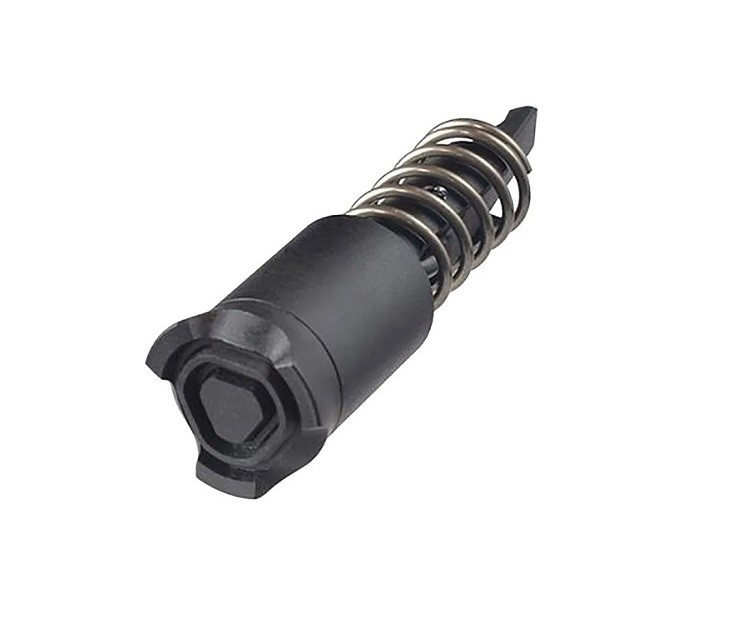There Are A Lot Of Debates Within The Firearms World And One Of The More Surprising Subjects Is Using An AR-15’s Forward Assist Whether You Make It From An 80 Percent Lower Receiver Or Buy It Off The Shelf.
Depending on who you talk to, the forward assist is a necessary part of the AR-15’s design while others claim it will only cause more problems. But the reality is more nuanced.
What Is A Forward Assist?
In order to understand when we should use a forward assist, we need to know what it is. When you pick up an AR-15 there will normally be a projection on the rear, right side of the upper receiver. This projection has a button inside it and is the forward assist.
Its purpose is to allow the user to push or force the bolt into battery if it doesn’t seat automatically. This was considered a necessary addition to the design and was required by the US Army before they adopted the rifle.
How Does It Work?
The forward assist is a spring loaded piece of metal that attaches to another angled piece of metal. Pressing the forward assist in causes the angle extension to interact with the ratchetted section of the AR-15 bolt.
Those “teeth” on the side of the bolt are there for the forward assist to have traction. It also allows you to push the bolt forward without having to drop the magazine and rack the gun again.
But when is this a beneficial feature?
When You Should Use the Forward Assist:
There are times when you should use the forward assist. These are related to the environment, emergency situations, and malfunction drills.
Environmental issues and Press-checking
Sometimes we will not get the perfect seating we want for our rifles. This can be from a recent press-check or it can be from environmental factors.
For press-checks we already have a live round ready to be chambered that we can ease back into the chamber. That easing may not fully seat the bolt carrier and result in an issue. It’s easier to just hit the forward assist to make sure the bolt is all the way home before we use the rifle.
When dealing with conditions in the field, the forward assist is very useful. When we try to keep our rifle out of the changing temperatures there can be condensation build up in the gun. This condensation can freeze and temporarily change the tolerances of the rifle.
If you have frost in your rifle, but not enough to cause a serious problem, you can use the forward assist to push the bolt home, readying the rifle for use.
Emergency Situations
One time you might need to use the forward assist is if the gun has gotten dirty. This can happen during competitions, training, or actual combat. If the dust cover is not closed on the rifle, there is a greater chance of dirt, debris, and mud getting into the rifle.
These can cause obstructions to find their way into the path of the bolt preventing the rifle from cycling properly. But using the forward assist can sometimes allow the weapon to close fully and fire. Which can be enough to get the gun working again.
Malfunction drills
Knowing how to fix simple malfunctions is important and one of the easiest ways to practice fixing a failure-to-eject (FTE) is by inducing that malfunction. By using the forward assist to hold the bolt in place you can reliably cause a FTE malfunction.
When You Shouldn’t Use the Forward Assist:
While using a forward assist for regular issues is fine, there are times when you should not use a forward assist.
These apply to major malfunctions and significant blockages.
Major Malfunctions
You shouldn’t use the forward assist to clear most malfunctions. Trying to do so has a higher chance of making the situation worse.
Failures to feed and double/triple-feed malfunctions will not be solved by hitting the forward assist. When you encounter an unknown stoppage, you should first assess the situation and apply the correct clearing technique, which usually does not use the forward assist.
Significant Blockages
If you encounter more debris in your firearm than normal, you can experience more significant blockages. Using the forward assist on a small blockage can get the gun back into working order or semi-working order. But if you experience a lot of resistance you could be making things worse.
Too much debris will only be fixed by more drastic clearing methods. Using the forward assist to try and overcome the stoppage can cause damage to any ammunition in the gun or completely lock up the rifle.

